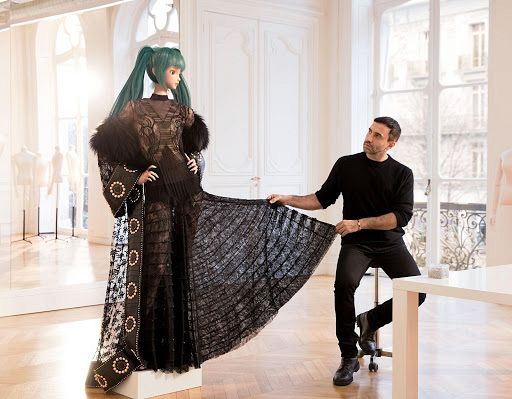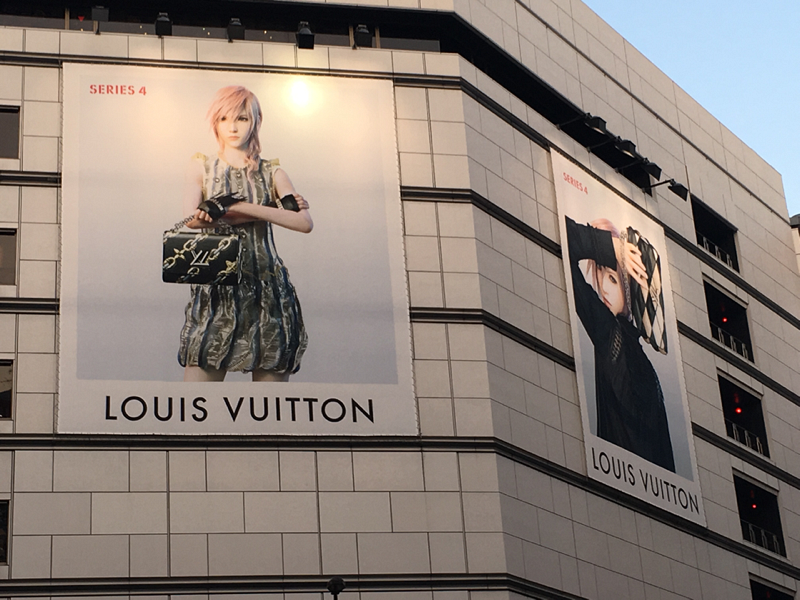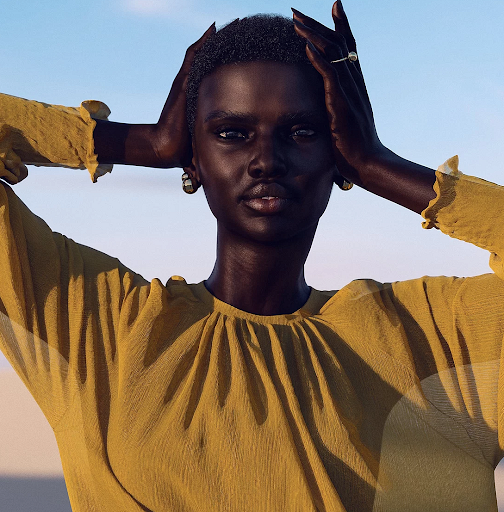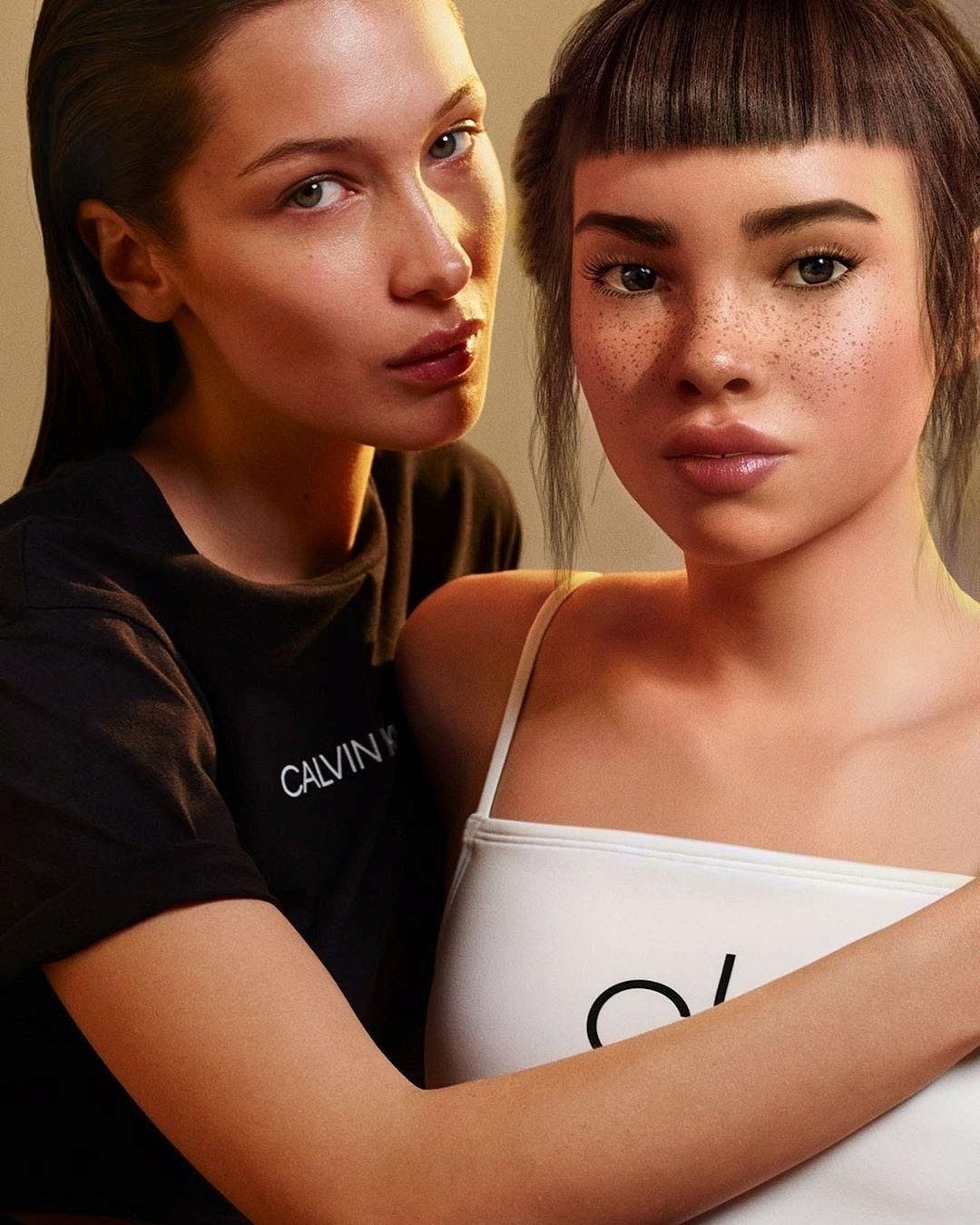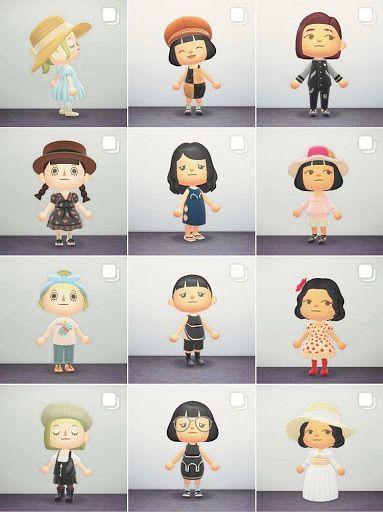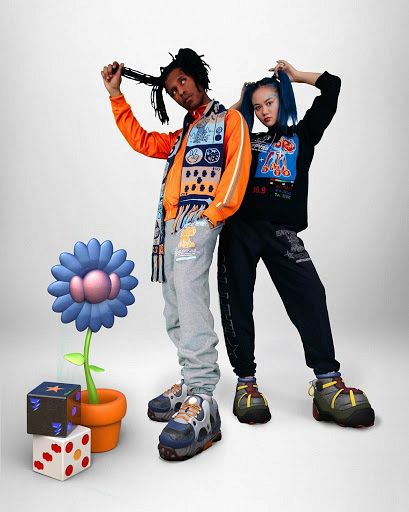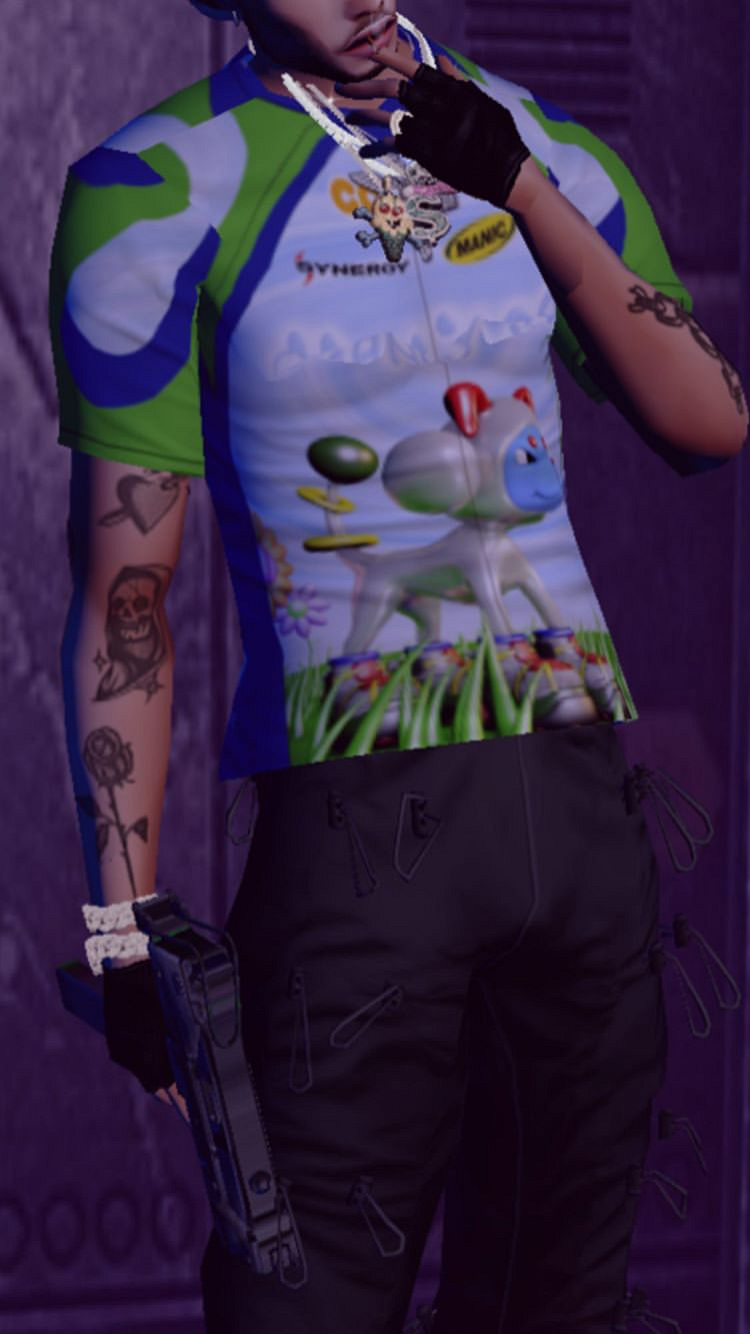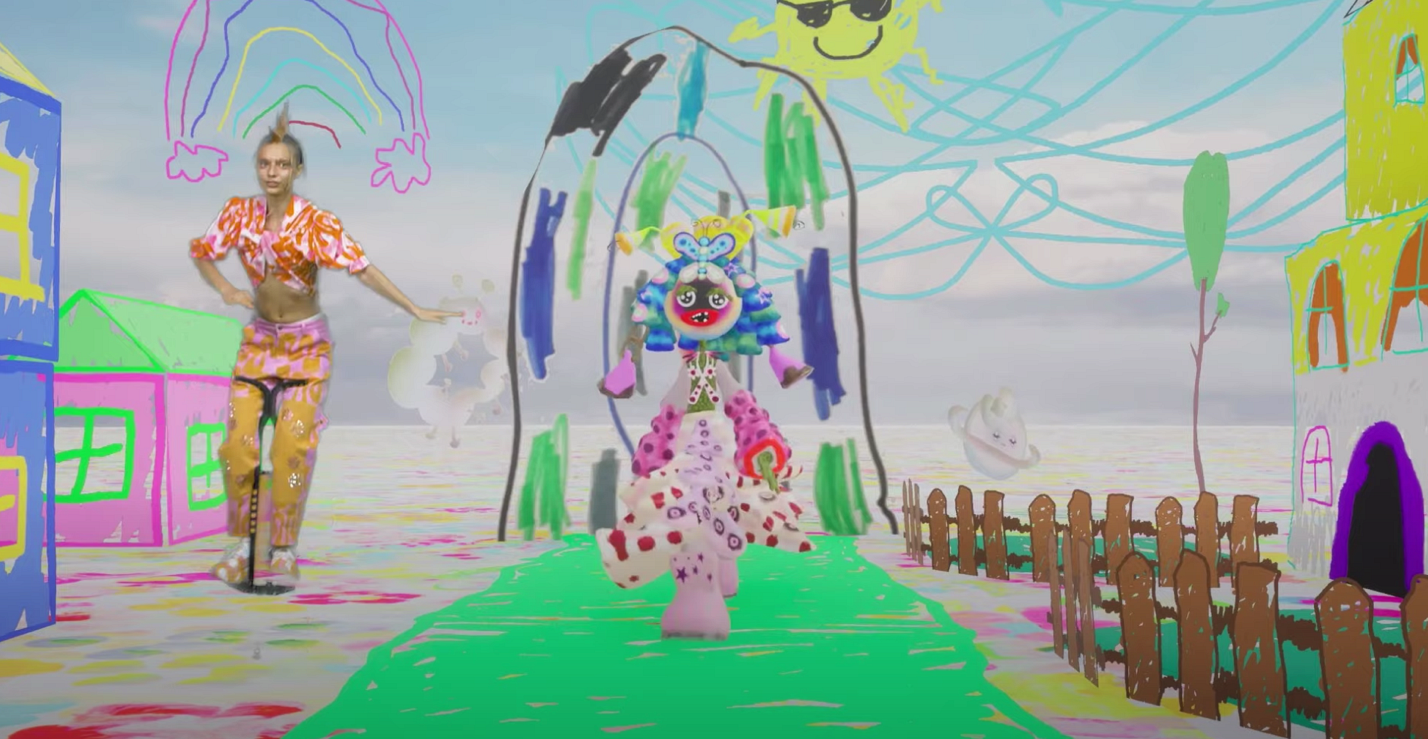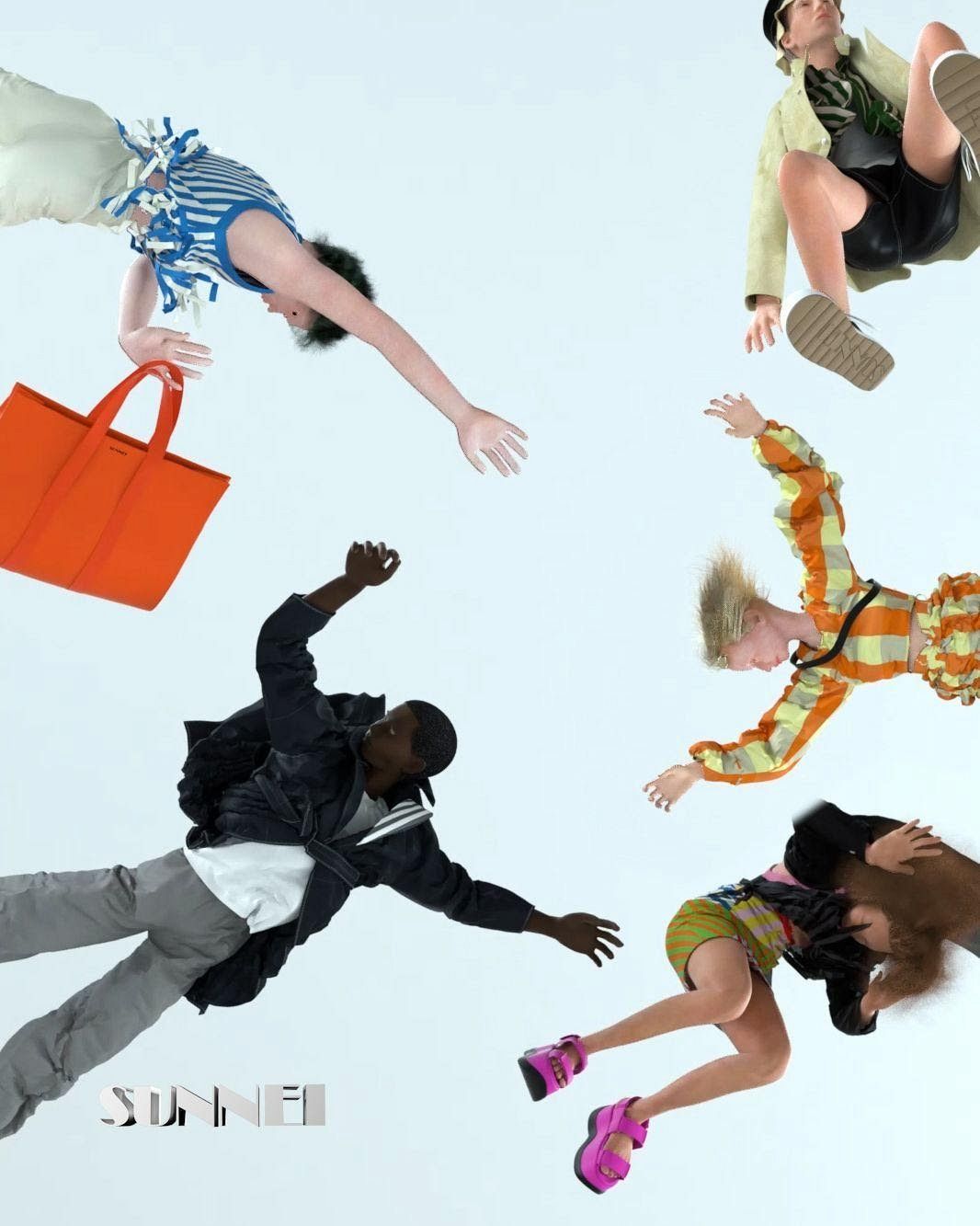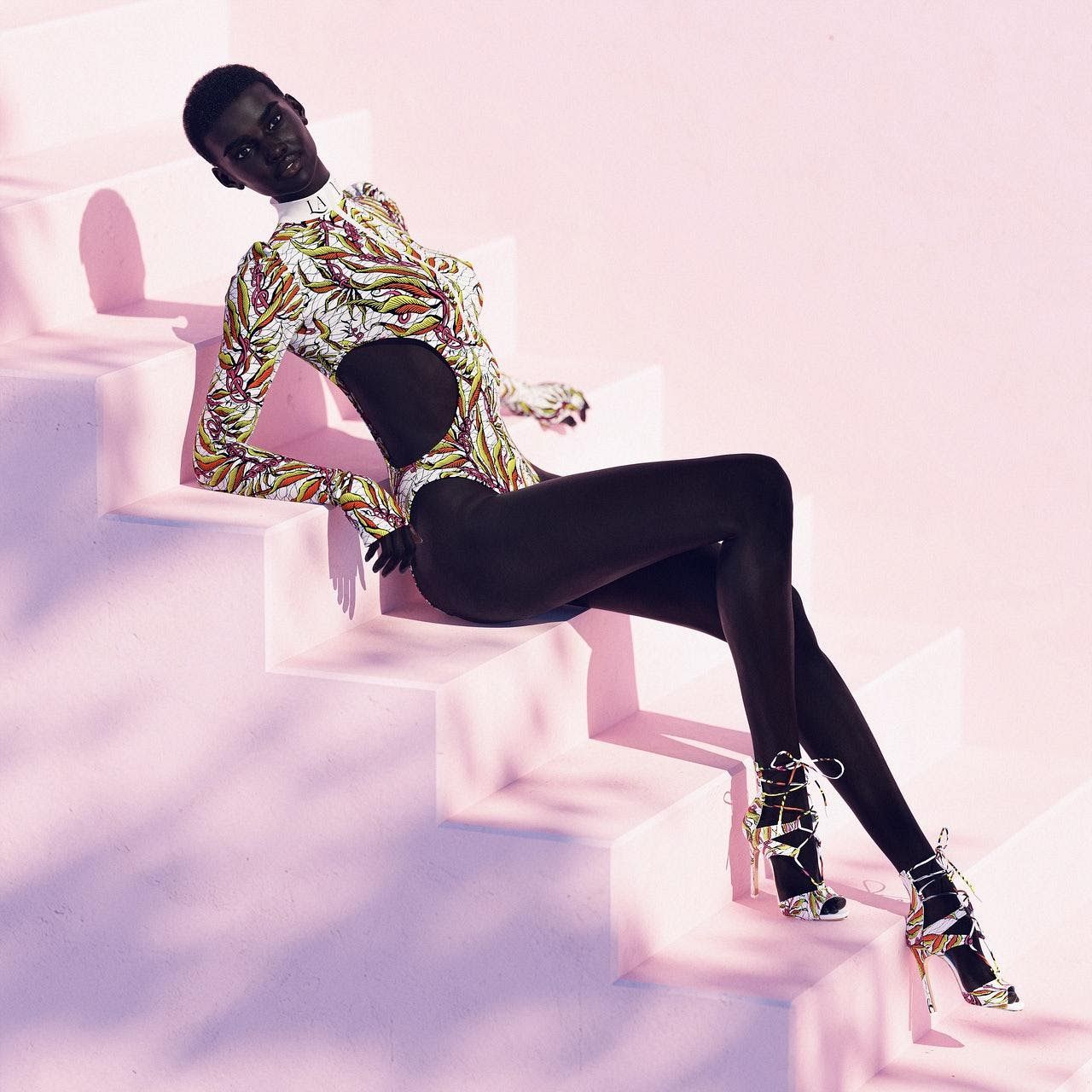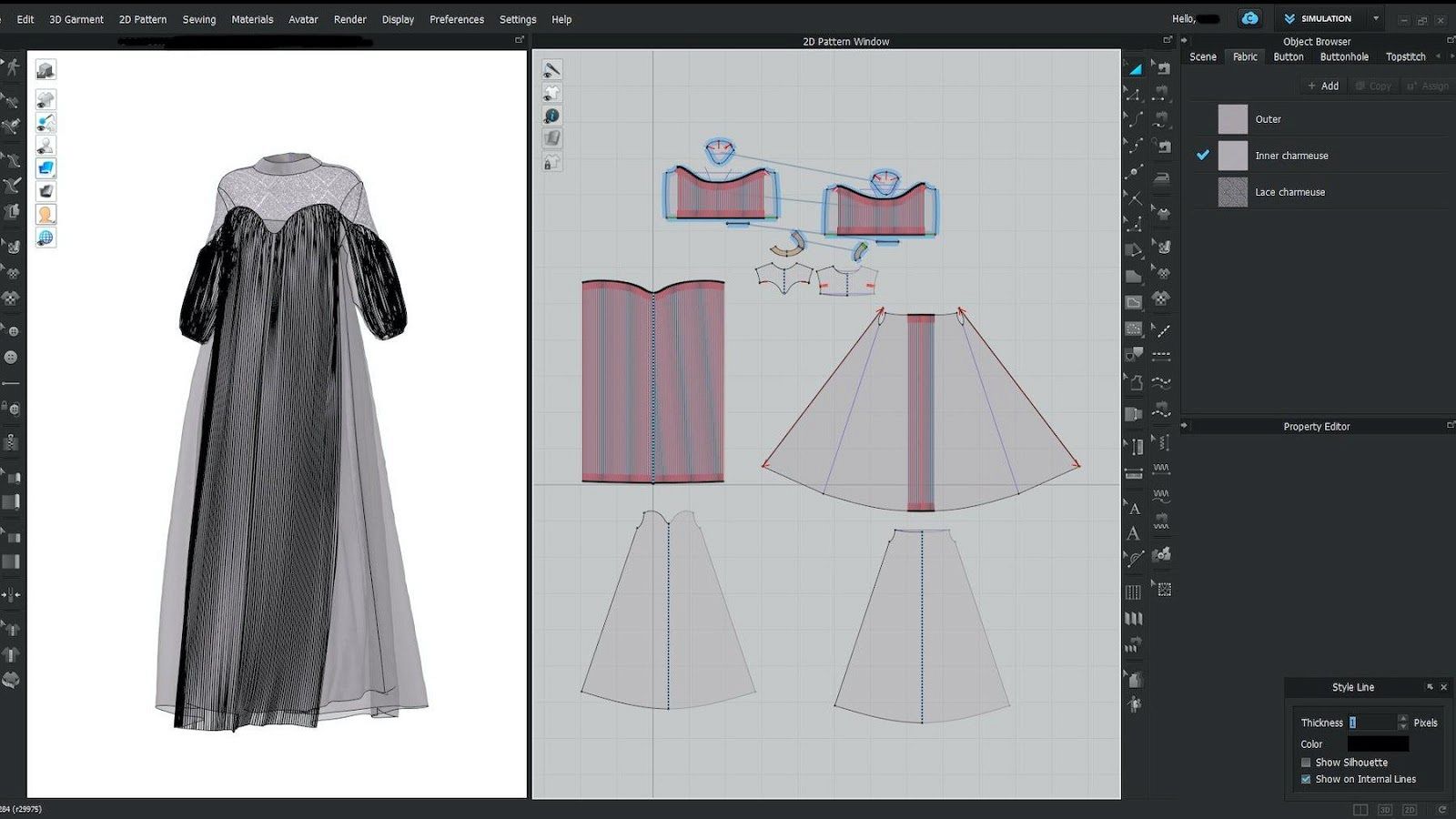Over the course of the last decade, digital avatars have entered the mainstream, especially within the worlds of entertainment and fashion media. In 2007, the Crypton Future Media company released its Vocaloid 2 voicebank software, a library of vocals compiled by voice actress Saki Fujita, along the anime mascot Hatsune Miku. Although the software was intended for professional music producers, Miku the anthropomorphic “vocaloid” became so popular in Japan that she came to be marketed as a digital pop star in her own right, complete with an open-source user-generated songbook. Although Miku is not an avatar in the traditional sense — meaning that she isn’t necessarily the form taken by a user within a virtual space — she could be viewed as an avatar of the Vocaloid software’s end user. Ricardo Tisci of Louis Vuitton would collaborate with Crypton Future Media to dress Miku in 2016, part of a larger engagement with digital culture that included collaborations with Final Fantasy producer Tetsuya Nomura and Riot Games’s popular online title League of Legends.
Louis Vuitton’s collaborations anticipated the emergence of avatars in digital fashion culture, recently culminating in the The Diigitals modeling agency, perhaps best known for creating digital model and influencer Shudu in 2017. Notably presented as a dark-skinned black woman, Shudu can be read as the avatar of white designer Cameron-James Wilson, raising enormous questions around the digital representation of race. Following Shudu’s editorial debut for Women’s Wear Daily in 2018, Wilson was derided for his virtual appropriation of black physiognomy in a space where black women are still woefully underrepresented. On Instagram, the freckled, self-described “robot” Miquela Sousa, or Lil Miquela, designed by the digital media company Brud, is a digital pop star and influencer boasting 2.7 million followers. Unlike Wilson’s Shudu, who lacks any specific human traits besides appearance, Brud has enriched their Lil Miquela project with a distinctive storyline. For example, Miquela was party to an online altercation with another avatar on Instagram in 2018, resulting in her page being hacked, which was later revealed as an elaborate publicity stunt. While Hatsune Miku is clearly a substitute for the Vocaloid software, Shudu and Miquela are rendered with such fidelity and interface with visual culture in such a believable way that they could almost be mistaken as real. Ultimately these avatars inhabit a hyperreality rather than a virtual one; they do not exist solely to intervene within the digital space on their user’s behalf, even if they were indeed created and continue to be maintained by humans.
To borrow from Jean Baudrillard’s Simulacra and Simulation, Shudu and Miquela are ultimately depictions of reality without an original reference. As avatars, they conform to the theories advanced in Baudrillard’s essay that claim, in large part due to consumerist culture, that all signs are based on other signs, and that it has become increasingly difficult, nigh impossible, to differentiate the “authentic” from manufactured social-cultural constructs. Shudu and Miquela stand in for the idea of an influencer and artificially replicate the influencer’s transactional relationship to fashion culture, which is itself a simulation of the relationship between the individual and the embodiment of their identity. This new conception of avatar need not represent the incarnation of a human at all, and indeed may be more accurately described as a digital construct that imitates human affect. Shudu and Miquela, along with the spaces they inhabit, are “hyperreal,” a state of being that Baudrillard defines as ”...more real than real,” arguing that media has deconstructed our perception of truth and created emergent ”hyperrealities” in which we might find a more compelling simulacrum of reality. This “precession of simulacra” is central to the postmodern condition, and digital avatars — befitting their role as change-agents in Hindu mythology — are the harbingers of this increasingly subjective reality.
Even as mobile gaming overtook the popularity of the video game console as a means for virtual escapism, the Nintendo Corporation closed the curtain on the eighth console generation with the launch of the semi-portable Nintendo Switch in 2017. Manufactured in partnership with the Japanese electronics company Hosiden and the Taiwanese Foxconn Technology Group, the bulk of the Switch’s components are manufactured in China. In February, as COVID-19 spread to every province of mainland China, production of the console was halted, and by the next month the virus had become a global pandemic. As the disease spread to Europe and then the Americas, rolling stay-at-home orders forced the affluent world indoors, where our only source of connection came through digital media. Internet platforms were inundated with users: IMVU, World of Warcraft, and Second Life, in apparent decline since the turn of the decade, saw a noticeable uptick in activity. For Nintendo, demand for the Switch surged out of control, thanks in no small part of the fortuitous release of Animal Crossing: New Horizons in March. Meanwhile, a burgeoning resale market for the must-have console soon emerged due to dwindling supply; the production of the console had ceased earlier in the year.
As entire industries ground to a halt, artist-designers would take refuge in the virtual space of Animal Crossing. Hong Kong-based stylist Kara Chung organized photoshoots, recreated designer looks in-game, and posed groups of avatars in editorial-style compositions. New York designer Sandy Liang launched a pop-up shop on her personal island and shared QR codes to download her latest designs, while the group of New York creatives behind Nook Street Market, a spoof of the luxury retailer Dover Street Market, started lovingly translating established high-end brands and emerging designers within the digital space, offering these items for download using the same QR system as Liang. Each of these artists had a vested interest in the community of creatives associated with fashion culture, and the digitalization of their practice endeavored to engage with that community during a time when the experiential, tactile realty of their medium was mostly inaccessible. The open distribution of visual culture is somewhat at odds with the pervasive monetization within digital media, and indeed in recent months new businesses have begun to tentatively engage with New Horizons to harness the platform’s commercial potential.
Although their practice began prior to the pandemic, another brand that explores the future of the fashion medium is Happy99. Happy99 takes its name ironically from the infamous self-replicating computer worm of the early millennium, a virus that crippled computer systems and amplified the Y2K panic. Interdisciplinary artist-designer duo Nathalie Nguyen and Dominic Lopez had initially been interested in footwear design, but struggled with the unsustainable realities of prototyping. After reconsidering the environmental impact of fashion and what it means to “consume” something, they decided instead to create an almost entirely virtual clothing line. Happy99’s artistic practice is primarily concerned with utilizing both the real and the virtual to amplify the customer’s connection to the brand. Lopez, whose background is in game design, is no stranger to avatar-driven narratives; the brand’s virtual clothing offerings are presented in 3D using digitally recreated avatars of actual Instagram users, and their limited-edition releases are also made available on the IMVU platform.
In September, as the fashion industry entered its first major post-pandemic cycle, Collina Strada’s Spring/Summer 2021 lineup presents us with an optimistic hyperreality: lo-fi greenscreen footage of models layered over psychedelic virtual environments, punctuated by whimsical 3D animation and dancing anthropomorphic avatars developed by artist Sean-Kierre Lyons. More than a simple fashion presentation, Collina Strada’s multimedia experience, the brainchild of designer Hillary Taymour and long-time collaborator Charlie Engman, illuminates the many conversations surrounding fashion culture at this juncture: the physical distance necessitated by a global pandemic, diversity, environmentalism, and the relationship between the virtual and the tactile. Taymour’s and Engman’s digital utopia invites comparison to Happy99’s own mystification of fantasy and reality, allowing fans and customers alike to immerse themselves in a narrative that moves beyond commodity.
At a moment when global attention has turned sharply towards the digital, the role of fashion culture within virtual spaces continues to evolve. Engagement with augmented reality is not limited to designers like Collina Strada or the digital environs of Animal Crossing; the Italian brand Sunnei recently debuted their seasonless Canvas collection, presented in July via a new avatar-driven virtual reality platform that will enable select retailers to customize the fit, fabric, and color of each piece. In the wake of digital blackface accusations, Shudu has been repositioned to facilitate conversations about social justice, and recently starred in a virtual fashion presentation for Cameroon-born designer Claude Lavie Kameni. The growing influence of 3D design programs such as CLO and Browzwear, the former being used to digitize the Lavie collection, has begun to address the wastefulness of high street fashion, charting a future in which fashion designs can be visualized on avatars instead of requiring incessant prototyping. All of these advancements serve a similar end: the creation of digital hyperrealities that move conversations around access and sustainability forward. Designer collaborations in The Sims 4, Animal Crossing, IMVU, and Bitmoji have suggested an expanding market for “direct-to-avatar” product lines, and it isn’t difficult to imagine a future in which fashion culture, long understood primarily through its tactile reality, expands to encompass a variety of virtual product lifecycles.
Popular Hindu scripture identifies ten avatars of Vishnu, known collectively as the Dhasavatara. The eighth, Krishna, is the central hero of the Bhagavad Gita and worshipped as a god in his own right; the ninth is commonly identified as Gautama Buddha, father of Buddhist philosophy. The tenth and final avatar is Kalki, whose prophesied arrival will bring about the end of the world. In a bibliography composed of numerous apocryphal and contradictory texts, some Puranic literature instead describes Vishnu’s avatars as innumerable and ever-present, guiding the narrative of history incrementally. It has become clear that the COVID-19 pandemic represents the end of something significant, revealing the cracks in the global capitalist system and putting tremendous strain on industries and institutions worldwide. Perhaps Vishnu is once more intervening in our reality to set history on the path of righteousness, this time aided by avatars and mediated virtual spaces that allow artist-designers to sketch a future in which, as Collina Strada declares, “change is cute.”
This is the second and last part of the essay.
Zachary Sauer is an artist-designer and independent researcher living in Brooklyn. He received a BFA in Fibers from the Savannah College of Art and Design and has worked as a creative consultant for various clients in New York and Los Angeles. His background in design and interest in critical theory inform his ongoing exploration of postmodern visual culture.
